Leaderboard
Popular Content
Showing content with the highest reputation on 12/03/20 in Posts
-
Hi again! I'm Chris and I'm a total noob here. I posted an introduction that will give more back story to what I'm doing here and what I hope to accomplish. So the following are watches that I inherited about 15 years ago and that have been wondering around my garage in a box waiting for me to do something about them. Most aren't very valuable, at least I'm guessing that Timex's aren't collectors items, how ever they might be the perfect brand for a noob to start of with. I dunno, maybe they're not even worth that, that's why I'm going to post everything I got. But I also know that a few might be valuable enough that only a trained professional should touch them. Again, I don't know. So what I'm hoping to get from all y'all is a little direction. Which of the following I might consider starting with and which I should wait on. I also have questions about a few of the nicer ones, I'll post those question with each pic. I'm also hoping to find one info concerning when these watches were made, and maybe something about the model line. Really anything. So lets get started shall we? #1 A women's Timex, I don't know anything about this one other then it belonged to my favorite aunt and it's not working #2 This was my dad's watch from the 50's. This has a lot of sentimental value. It's not working #3 Another non working ladies watch that was a $200 repair estimate #4 This is probably the nicest of the bunch. It was my uncle's and I think he brought it back from WWII as a trophy. It isn't working and 15 years ago a watch guy I went to in the fancy part of town wanted $600 to repair it. I know it must be a nice watch because the very sweet, very old guy who quoted me that price said, in a very thick Jewish accent, "Dees ees verly verly nice vatch" while grinning at me like a lunatic. When I told him I couldn't afford the repair he made me promise not to bring it to 'just anyone' and insisted I only bring it to someone who knows what they're doing. I've googled this but can't find any Lemania's that are like it. This is the only one I've seen that has the numbers tilted toward the center. #5 Another non working man's watch. I don't know if this is from the London jeweler's Jessop, I couldn't find much, but they wanted $200 to repair #6 I love this watch and I wore it for years until it stopped. I brought it to a repair guy and he said a gasket was gone and that water had gotten into the works and fouled it up. I had been taking it to cheap watch places because all I needed was a battery change. Came to find out that if I would have brought it to someone who actually knew what they were doing they would have looked for that issue as part of the service when replacing the battery. I could kick myself. Oh well, live and learn. There's a number on the back, 707004-3 #7 I know nothing about this watch except that it isn't working #8 They said that this one isn't repairable. That seemed a bit odd to me but what do I know? Anyways, it isn't working. #9 This was my moms everyday watch back in the 70's and it isn't working either #10 This Waltham they said just wasn't worth fixing #11 My moms fancy watch, also no heart beat #12 A ladies Hamilton that's dead #13 I think this was my favorite uncles. I'd really like to know more about this one, I have the band and the part of the band that the watch fits into, it just falls out of that part. This one does have a pulse. It ticks away and doesn't stop. #14 This is an antique alarm clock that I added only because in my noob brain I thought the might be a good place to start because it's bigger. So that's what I have, I'd love to hear your thoughts and suggestions and if I can provide more information to help, please just ask, I'll be happy to take more pics Cheers! Chris3 points
-
2 points
-
2 points
-
I,d put them timex pieces back where they were, practice on jessop and bucherer. Carle F Bucherer and some other bucherer pieces are good quality pieces, not this one though. Search for a reputable repairman to send the lemania to for service/restoration. Let us see what westclox has hidden under the hood. Regs Joe2 points
-
It’s up to each of us to decide what tools we use. I use my Bergeon Presto wheel puller and have never damaged a watch component with it. And I have used it many times. In fact, I used it for a similar Omega Cal 501 Seamaster 300 very recently. Re-fitting has never been a problem. It’s similar to fitting watch hands - they rarely require tightening. If you refuse to remove all driving wheels then you may have more difficulty cleaning some movements such a chronographs, where it is required for proper disassembly. I serviced a Valjoux 7733 today, and that is an example of where I wouldn’t want to leave the 4th wheel driving wheel attached as you can’t easily remove the 4th wheel otherwise.1 point
-
1 point
-
unless the original movement was damaged, getting to run again would be rather quick.1 point
-
this really would be the best solution if you can find the right people. Because there are shops out there that specialize in this kind of thing. you don't entirely want a jewelry store because they don't always work on watches or if they do they sometimes have issues and take it to the shop where you're supposed to go in the first place anyway. Or you could always ask at the jewelry store where they had recommend taking things. Be careful what the Loctite approach you might end up with a band that no longer flexes and even gets locked in a really solid it will defeat the whole purpose of you going to take it out again.1 point
-
Well, then you are on the right path! No one will ever see the oscillating weight unless the movement is removed.1 point
-
Reviews? Mine works just fine. Do not assume that a price difference means a quality difference when it's about Chinese mass produced objects. If you want to be a bit different and not dependent on batteries and Electronics, get a vernier or dial caliper.1 point
-
Welcome! But, you will never stop collecting tools... they just get more obscure and more expensive.1 point
-
1 point
-
That Timex has a cool dial! I put the old 1680 away again and dug out this gem. It has to be one of the nicest dive watches available today, regardless of cost. Polishing that puts the Swiss to shame; stainless case WITH hard coating to avoid scratches; sapphire crystal; silky and precise bezel “action”; retro 62MAS inspired styling; bomb-proof Seiko movement and construction. I highly recommend it. I wear it on an Isofrane dive strap (navy blue) that looks so right on this watch.1 point
-
NP. I had this dilemma with one fairly expensive watch that had 7753 movement. I could have (in theory) swapped the movement, but (BUT) one 7753 is not the same as "custom finished" another 7753. I ended up servicing it (excellent test of your patience). I think it was right decision as i definitely wanted to keep that watch original.1 point
-
Disagree. A timegrapher is not just for regulation, it is to tell what is the health of the mov.t, particularly the balance and escapement, primarly by amplitude and pattern parameters over different positions. As one become experienced can then learn how make a quick judgment going by visual and sound, but a beginner can't, and with the watch running and keeping time he may believe he did a good job - he has no objective way to see if he didn't. The OP will find important to have a good read on the documents posted by our fellow watchweasol above. Now, admittedly a timegrapher is not on the list of "day 1" tools by our Host and Mentor Mark Lovick, surely a microscope isn't even- it is not such an important tool for a beginner. https://www.watchrepairlessons.com/2019/09/30/essential-day-1-tools/1 point
-
I got them today, some of them are damaged as they were put into the same plastic bag and the sharp legs scratched the faces. I was kind of expecting that when I saw them in the same bag on aBay and the royal mail also helped with the damage, most of them are ok though. If you still would like to trade i am going to pick those where there is no damage.1 point
-
Well thats a fine collection, and some worthy of note. Me I would take my time asses each one and probably work my way through the lot timexes included. I have attached a couple of publications which if you are getting into the watch repair might be handy, a good read, TZIllustratedGlossary.pdf Witschi Training Course.pdf 1612608791_ToolsfortheHobbyist.pdf1 point
-
I have not seen one "cover it all" print. Just various books, instructions in other than English languages. Not sure if i can post links from other forums here. Will send you a link via PM.1 point
-
Today’s watch is my longtime owned Timex Sprite. I have no idea where I got it but it’s been in my dresser drawer of treasures since I was a boy. The original plastic strap hardened and cracked into pieces years ago so it was just a case until I recently decided to bring it back from the dead. I put on this lovely black leather Bulova strap I had from another watch and think it looks sharp. The movement was bound likely from overzealous winding and would only run for a few minutes at a time. Thanks to eBay I was able to find a trashed but running case to serve as a movement donor.1 point
-
Disagree. The sooner "beginner" will get a microscope, less damages will be done. Almost every beginner's story is about breaking something because "it's so small, i could not see it, i did not notice, etc). As for timegrapher - absolutely not necessary for beginners. It does not matter if your watch is gaining or loosing time as long as you successfully brought it back from dead by cleaning and oiling. Timegrapher is your next step, once you are at least able to fine-tune your watches by using regulator, and making many other fine adjustments, selecting right type of oil, etc. BTW, a simple timegrapher can be a free program, and less than $5 in parts (microphone and cable). This is my opinion - not going to argue with you or anyone else about chickens and the eggs.1 point
-
I would suggest to start with getting a microscope with ring light mounted to it. Then a few tools: screwdrivers (0.5mm, 0.8mm, 1.00mm, 1.20mm at least), and some case openers. Also, you will need some storage containers to keep your parts safe. Make good notes while disassembling your watches: model / calibre, serial number, case ID, what is broken (mainspring, lost / broken parts, etc), take good pictures via microscope - will be easier to reassemble your watch if you forget what goes where, and research each watch calibre on-line.1 point
-
1 point
-
If you look carefully the square the count wheel fixes onto some have a mark on it for a guide for fitting it correctly.1 point
-
1 point
-
1 point
-
So, you have basically four categories of watch as I see it. "Simple" mechanical wrist watches, quartz wrist watches, one mechanical chronograph and a bedside-table alarm clock. Taking the last one first, you are right to think that big is easier, but only if they were built to be serviced. That's why Nucejoe whats to see the movement first. Could be a load of cheap pressings and rivets. The chronograph from Lemania, your Jewish acquaintance was spot on. This needs the attention of an experienced enthusiast, with the right tools. It's too challenging and valuable to put in the hands of anyone else. Hang on to it though. It has the potential to be a beautiful watch. The quartz watches; both (?) ladies' Timexes, both (?) Hamiltons, Nicol. It could be as easy as changing a battery, but if the batteries have leaked or water has got in, then it's exponentially more difficult. There are some on this forum who can help you with the electronics. I can't. If you can get the backs off without damaging the cases or yourself, it takes a minute to have a look and get a first impression. Take photos of the insides and post here. By simple mechanical I mean time-only or time and date. These are the bread and butter on this forum. Every one of these watches - your dad's Timex, Bucherer, Jessop, Illinois, Waltham, your mum's Bulova, GP - should be repairable with more or less effort, but the chances are, some will be long-term projects requiring skills (and tools - never forget the tools!) to repair that you may need years to acquire. As an absolute beginner you are likely to do more damage than good, so you need to select one that means nothing to you, where replacement parts or donor movements are easiy available. It would be worthwhile getting the backs off all of them, so we can try to identify the works. At the moment I would start with the Jessop or the Waltham. The Bucherer looks too small.1 point
-
1 point
-
Hi Joe, as far as I know selitta make 3 or 4 grades of movement. From standard through to chronometer. Oh I just found this https://calibercorner.com/sellita-grades/1 point
-
Hello JonhC, also as well as above answer make sure you have no other working watches on the bench or near the machine. You would be very suprized how sensitive these machines are, and it will throw your readings1 point
-
True, from the dial side, but what was the dose through the case? What was the dose through the crystal? Mostly Radium throws out Alpha and Beta radiation, so most of that isn't going anywhere. https://en.wikipedia.org/wiki/Isotopes_of_radium#Radium-226 Some of the gamma will get out. Dust is the real hazard. Take care when dealing with that.1 point
-
While most of the folk on this forum would look to service and replace something if necessary, I kinda get your logic on a whole movement replacement if you don't have that experience. Your swap rationale is sound since you are replacing like with like and all your assumptions should be fine. I wondered why you wouldn't just get a pair of inexpensive digital calipers (a fiver on ebay and generally useful) to make sure you got a movement with the right height hour wheel in the first place rather than ask about a swap. But I can see why from your second picture ... you've removed the dial with hand in situ by the looks of it as hour wheel is on reverse of dial rather than on the movement. Just be careful here. Dials are normally notoriously sensitive to marking so you don't want anything in contact with it. You also have to ensure if you put the dial back with this situation that the hour wheel seats okay. And remember to effect a date change and put the hand at 12 when you reassemble so it's in the right place. You should look to replace any gasket too. Assume you found one when taking the case apart?1 point
-
1 point
-
Hi un less you have the through put to justify the cost and are able to get a return on your investment I guess the answer is no I myself use a small jewelry cleaner(ultrasonic) and mini jars, (single portion jam) as used in hotels. The jars contain the cleaning fluid of your choice and are placed in the U/s which contains warm water up to the level of the cleaning fluid and then started for several mins, a cost effective way of cleaning and it works whether you use IPA or Ronsonol, Naptha or whaterver. I reckon the cost was £19 for the cleaner £10 for the IPA/ ronsonol. Si for me save your bucks for somthing you really need and can justify. And take the wife out for a drink. ,1 point
-
1 point
-
Yes i am , i live in Cary NC and have a repair shop in the Triangle Town Center north Raleigh. if you ever in the area do drop by. My Store name is Jewelry Express. maybe we can meet up sometime. or if you need some parts or help just let me know. my email is [email protected] or you can reach me at 919-985-93991 point
-
Hi, Yes I’m still around. I’m about 4 hours west of Raleigh. It’s been a while since I posted anything but I still look in once in awhile. Been doing this as a part time business for several years now and sometimes I’m so busy that I don’t have extra time like I used to have1 point
-
The problem doesn't end with removal, but manifests with reinstallation (usually after several serives) the wheel MIGHT come off in couple of weeks/ months, wobbles( due to slightest bending of the pivot) enough to cause depthing with center pinion to the point it stops the watch later down the road. I should have about fifty fhf70 movements and have seen this to be a culprit with indirectly driven minute wheel. Some folks peen the upper end of the hole, to provide for a firm fit, some glue, some question if heating things in oil bath can cause enough expansion for reduction of wear inside the hole during removal. Side shake on its arbour tells you only so much about the arbour or the jewel underneath, never as much as visually checking things under high magnification. I asked nickelsilver about this about a year ago, the answer was, remove/ replace with proper tool, he didn't add I might fail to get good results if I haven't mastered the task. I say removal is a good idea only if you are sure you have first sourced new wheel and all parts underneath, a Rolex repairman doesn't need my advice as the piece is worth new parts, an fhf70 in a twenty year old west end watch, is not worth the expense of same new parts, which is why I have about fso many fhf70 west end watches burried in box looking at me straight in the eye. ? Joe1 point
-
You want a hardenable steel, preferably (strongly) in its annealed state. As close to final thickness as possible, as it's a long boring process to work it down. Stick the old part on your blank metal. In school we used soft solder, but you can use superglue or whatever is handy. If you have the broken bit stick it in place as close as you can to its proper position. If you don't have it, you can approximate it from the Bestfit drawing. Now you can drill through the holes in the original part, and saw and file around the perimeter of the old part. One way we were shown was using a Dremel type cutoff wheel held in the lathe, with a slotted table in the T rest, and you grind away the blank. I never liked that as the wheel wears and the grinding dust and precision lathe bearings is a bad mix. It goes quite fast with a jeweler saw and file. If you can only find pre-hardened steel, like feeler gage or old clock mainspring (yes it's a fine material), it would be best to anneal it first. Heat it to a dull red and let it cool as slowly as possible. If using clock spring now you can redress it pretty flat, finishing on various grits of abrasive paper to get it uniform. Don't get nervous about making the spring arm too fine, if it's too thick it will be hard to pull into setting position and it could lead to premature wear on the detent and stem slot. Make it as close to original as possible. To reharden (or harden), heat to an orange color and quench in oil. Even if it's a mystery steel this will 99.9% of the time work fine for small pieces like this. I like to hold the part in a steel tube, I use old canisters from seltzer or whipped cream siphons (they are about 20mm diameter, cut the neck off, perfect for watch parts). If you want to get fancy fill the tube with wood charcoal powder before heating to orange, and the part will come out of the oil a nice grey color. If you don't use the tube then it's good to make a little basket out of iron wire to heat the part in; this helps ensure the heating is even all around. If it's dark in color after quenching, brighten it on fine abrasive paper, then heat in a little pan of brass filings over an alcohol lamp until it turns a nice blue color. Now you can finish it, a grained surface off of abrasive paper it nice, and use a toothpic in a hand motor and some polishing paste to finish the notches that work with the pin on the detent. This can also remove the blue from the sides and in the holes. Ah- if there are countersunk holes for the screw/s, do this (with and appropriate drill, hand held in a pinvice) before hardening.1 point
-
Thanks. This is not something new. When you received your watch, was it showing 03:28 time? ? Which model of Geiger counter have you purchased? And, did you have a chance to watch this video ?1 point
-
1 point
-
Or take it to your local watchmaker's / jeweler's and have them fitted. Get both done while you are at it. The originals are apparently worn out. Better safe than sorry on a five-minute job with very low material cost.1 point
-
Hello everyone, isn't it a great skill in its own right to be able to make precision watchmaking tools. This little beauty is a balance poising tool with a sliding base and spring loaded vice to hold balance wheel in different position while you remove material from the balance wheel underside or rim side. The hand held cutter is sharpened by hand. I have used it on pocket watch and vintage wrist watch to make new balance out of scrap parts. But only once combined with hairsping vibrating tool for 18000 bph watches. A lot of fiddly work, but can be done VID_20201129_094512.mp41 point
-
Considering distinctness of 21600a/h , your balance complete or its hairspring is highly likely to be off of different variant. Doesn't belong would not vibrate to the watch.1 point



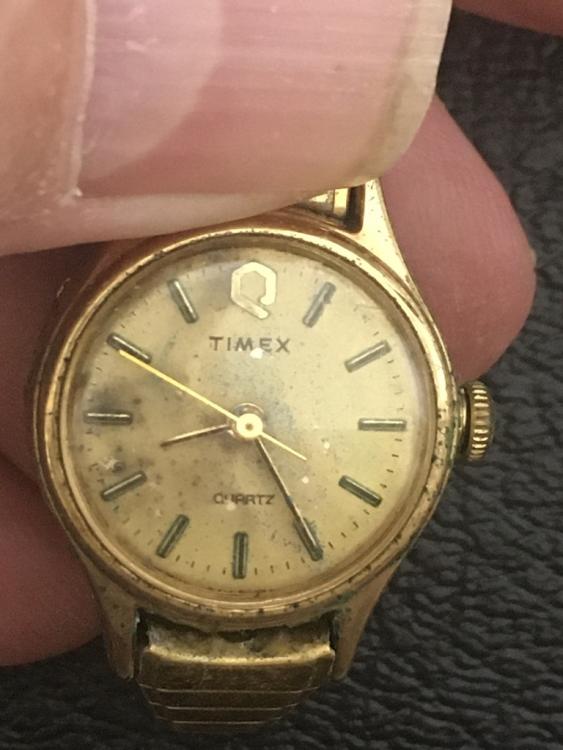
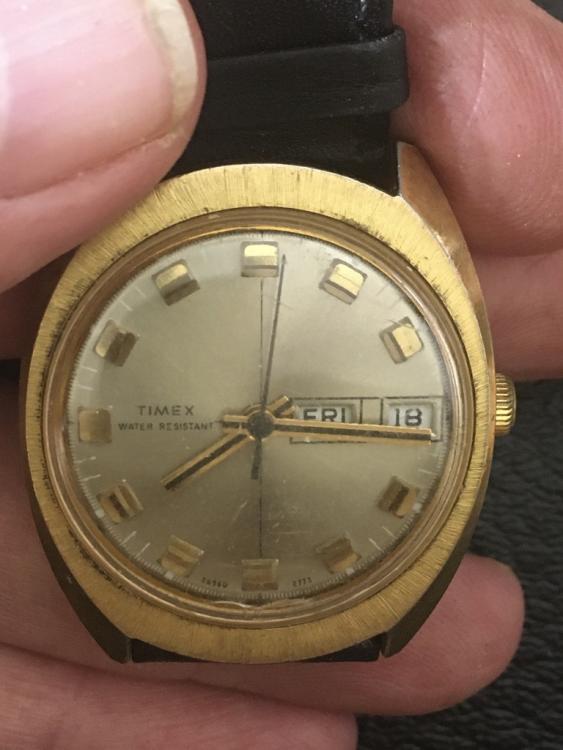
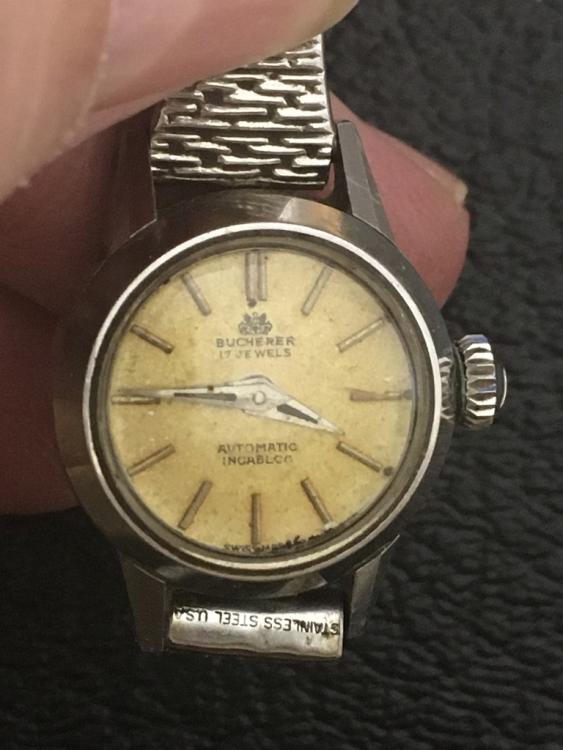
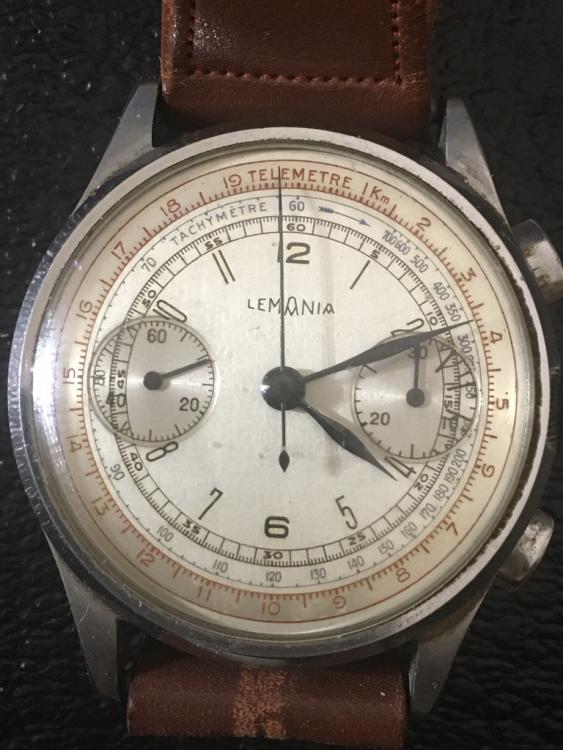
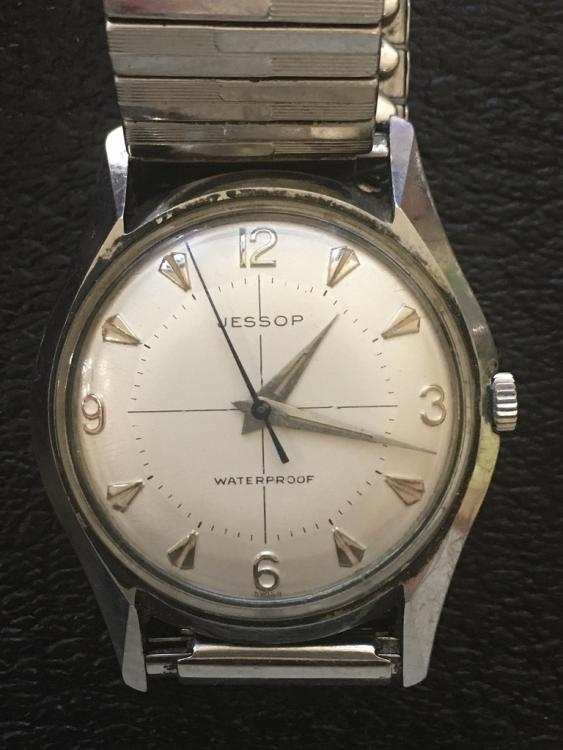
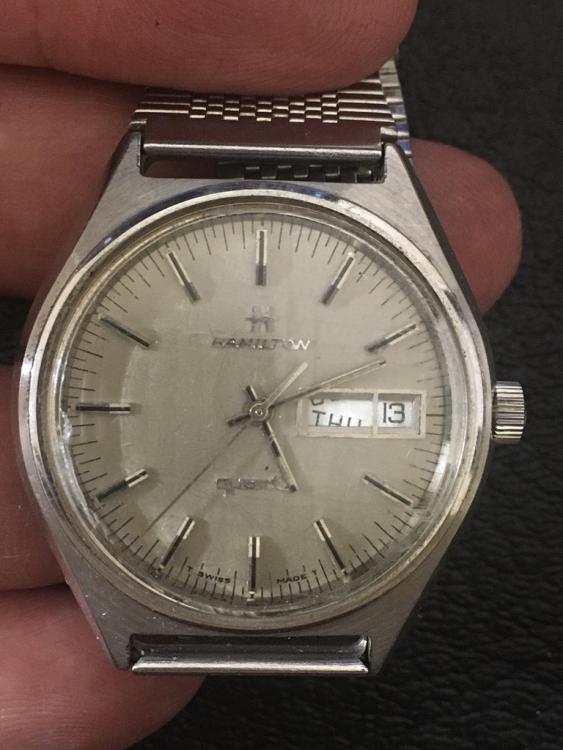
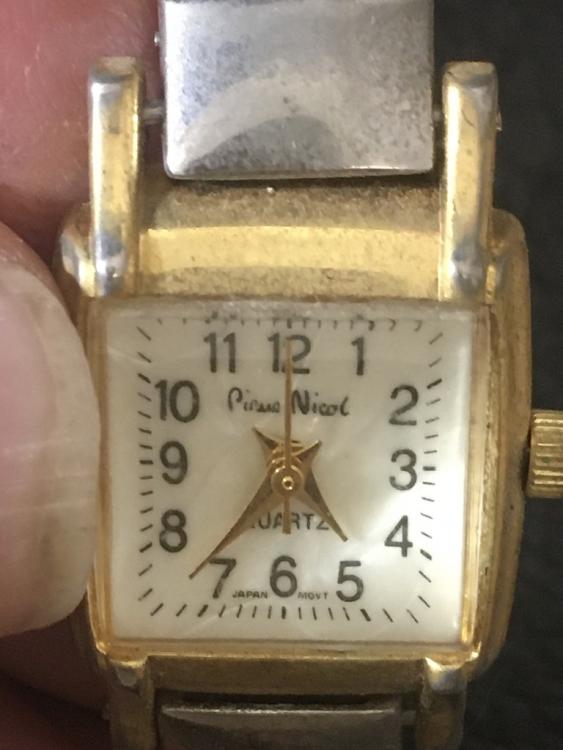
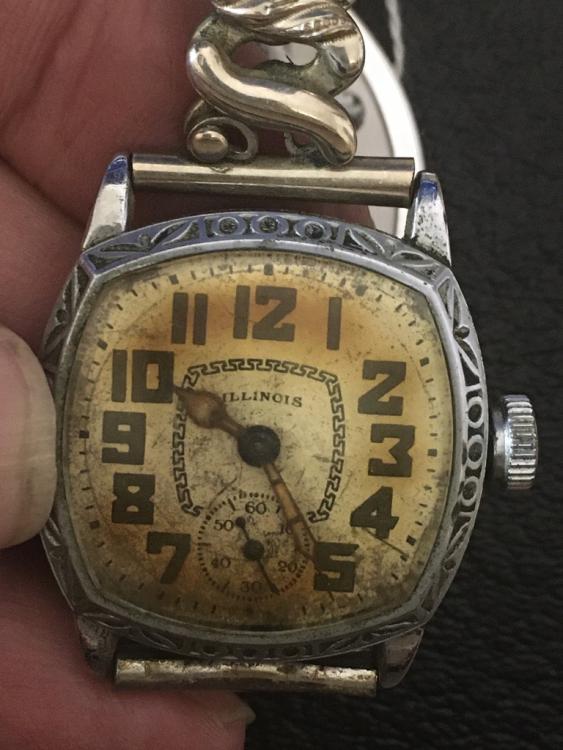
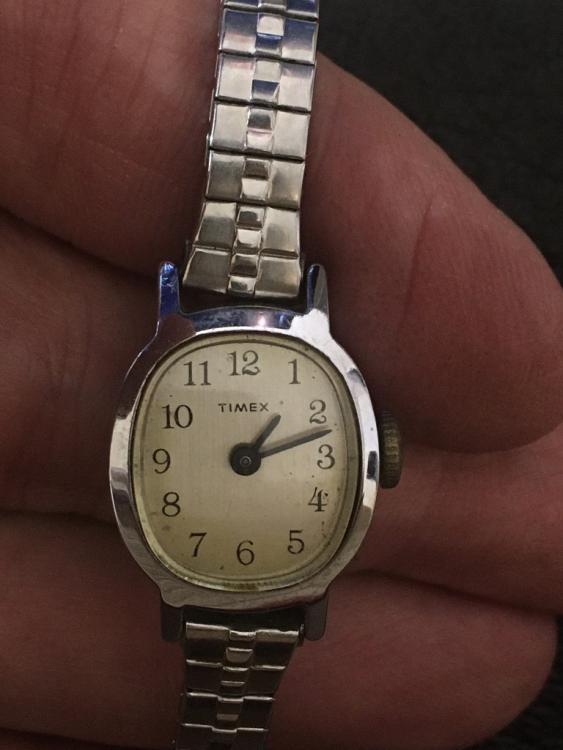
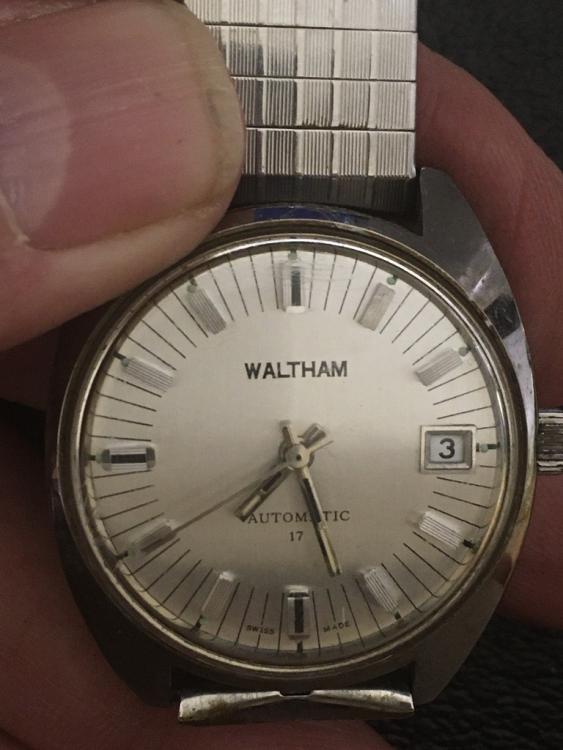
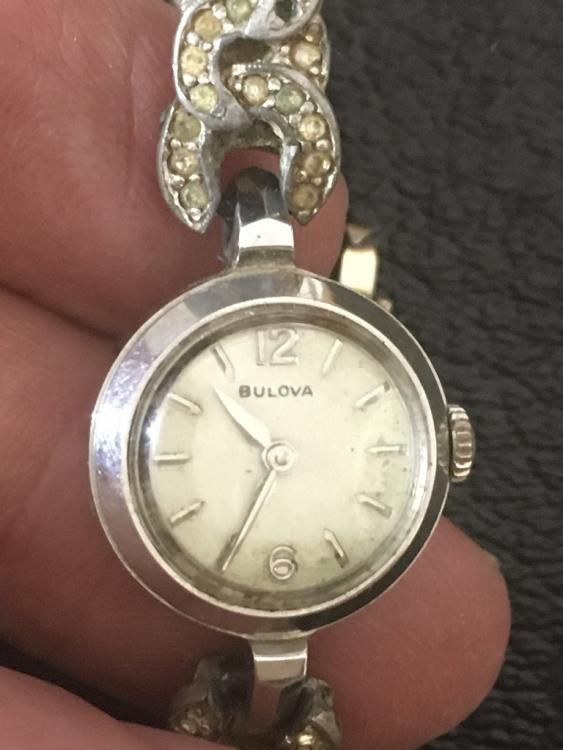
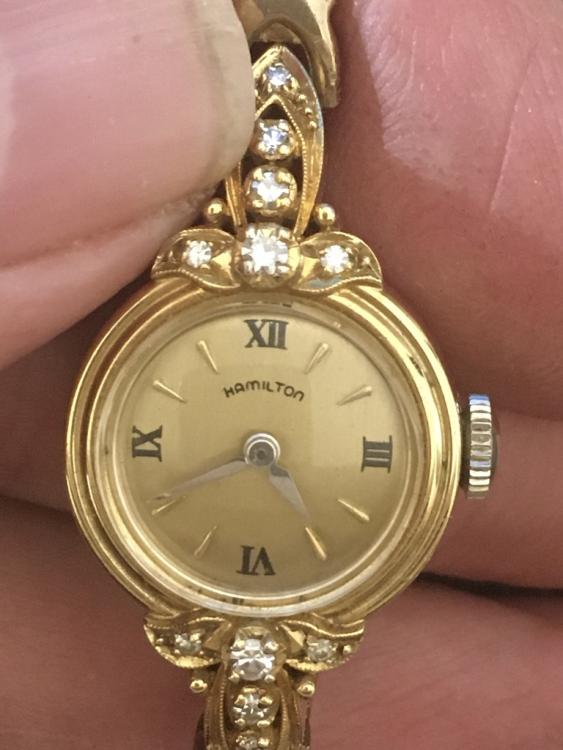
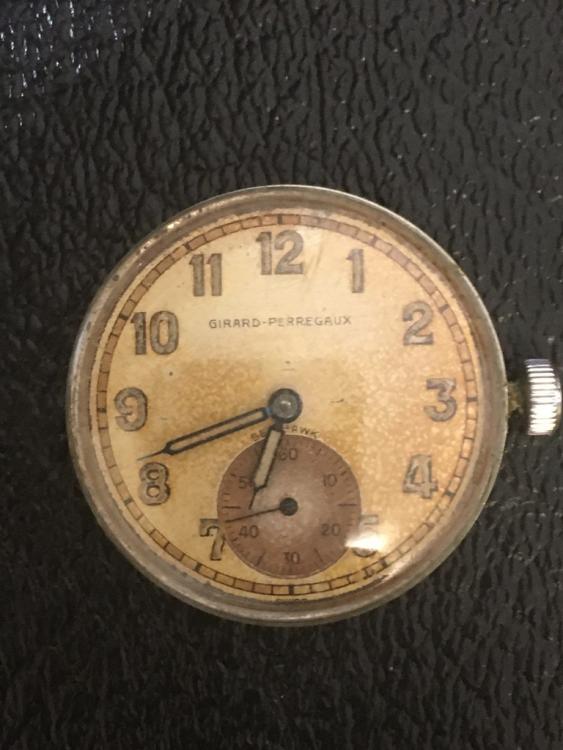
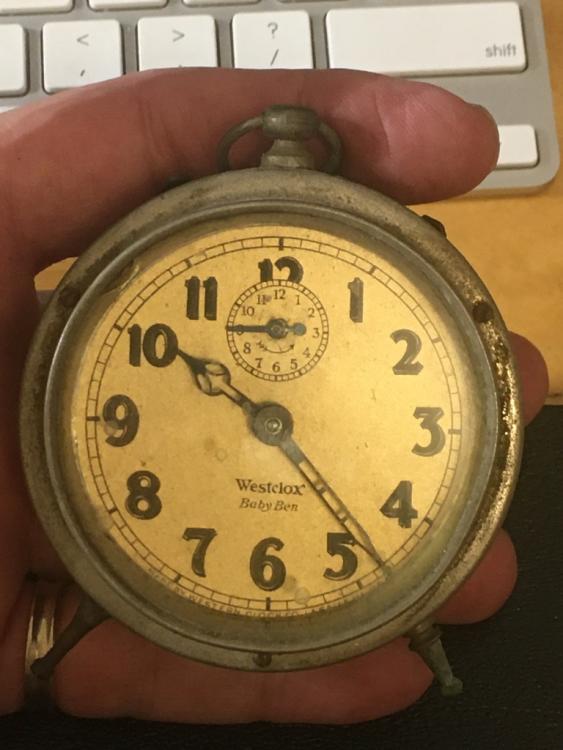

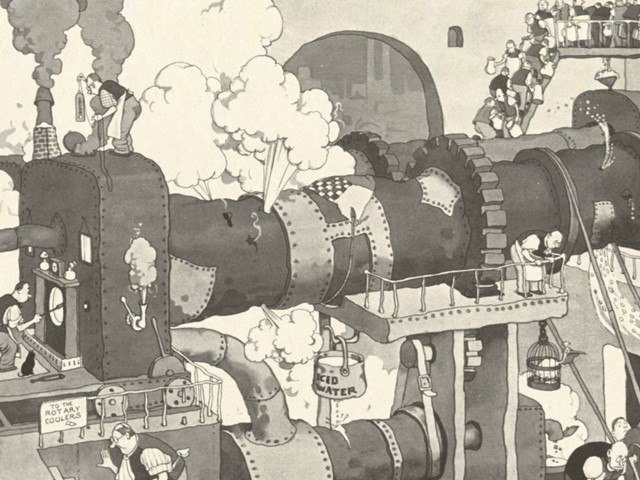


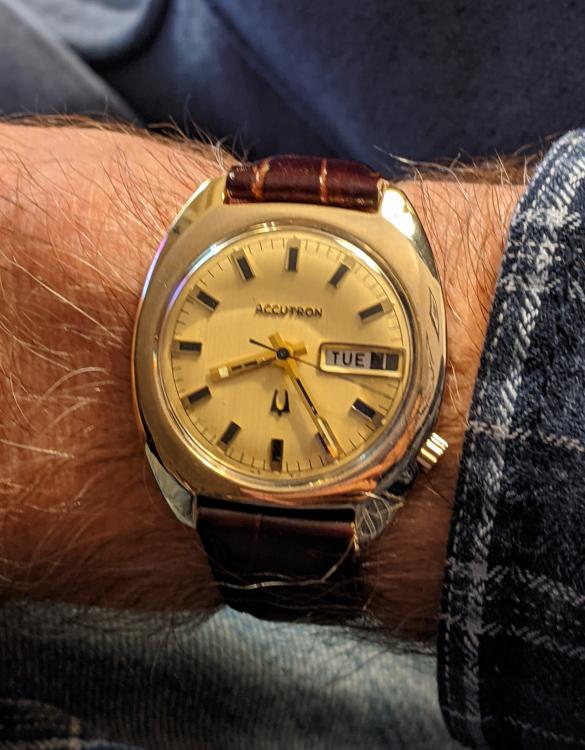


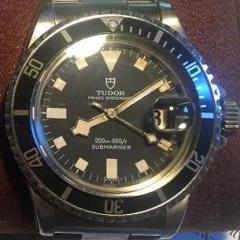
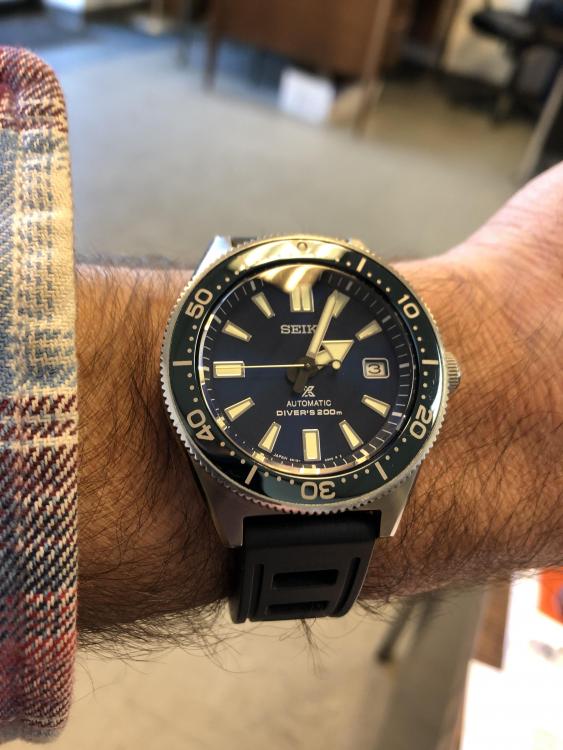
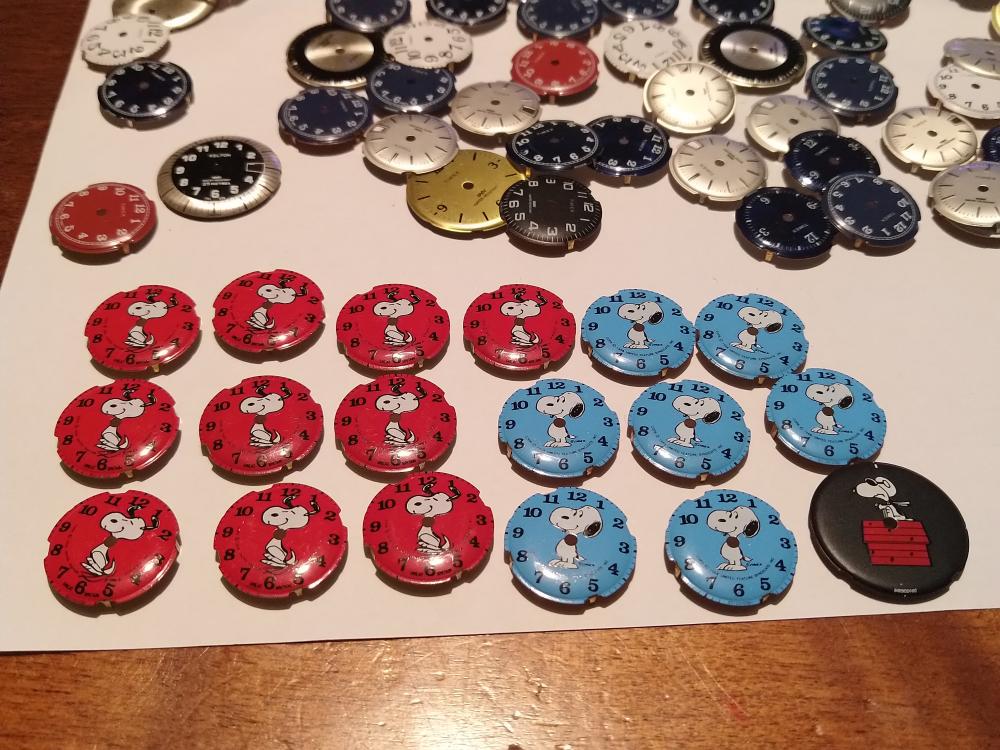

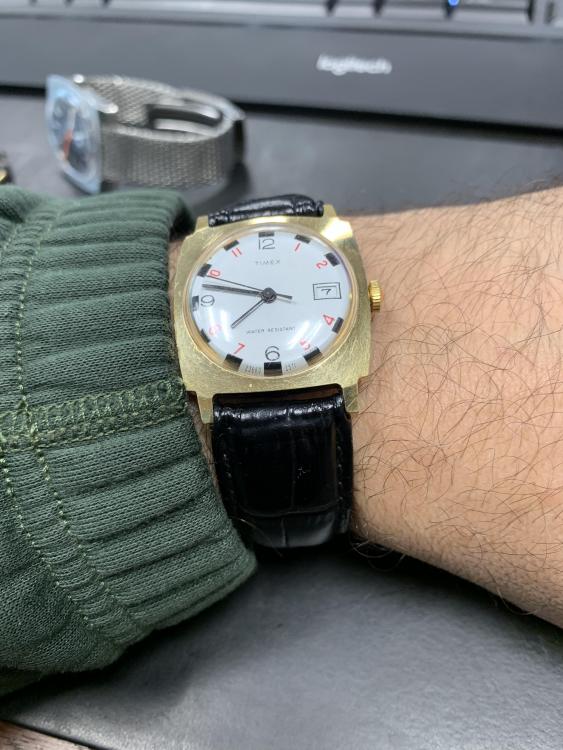
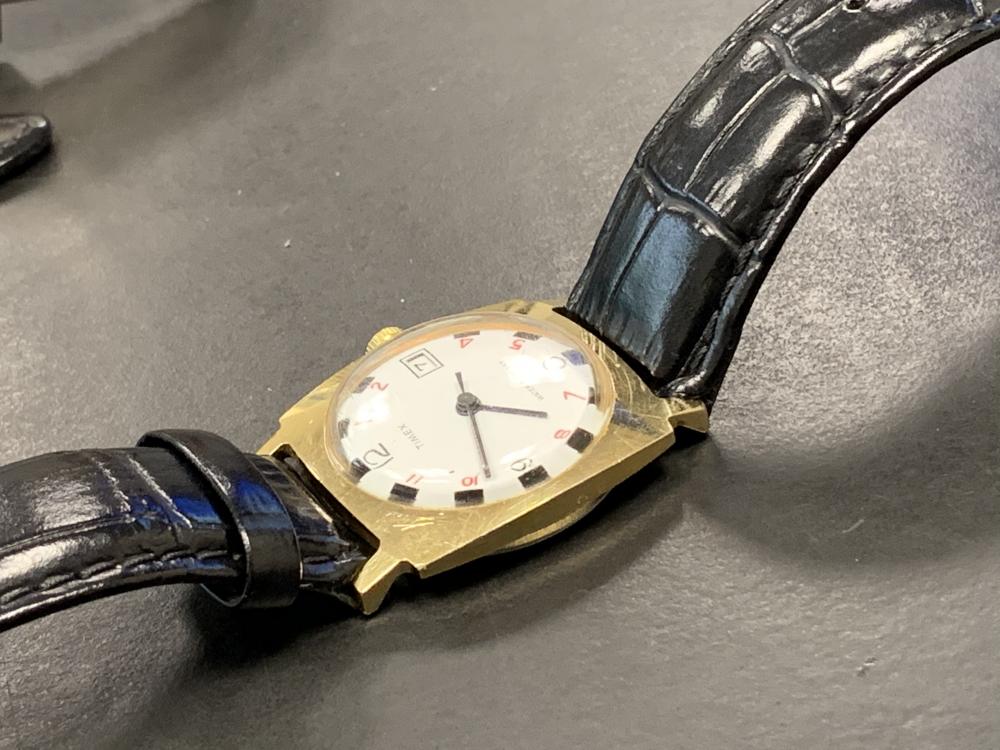




.thumb.jpg.0fa62ae5732188fdc470006e0d5eb56b.jpg.562b86a436dcfc16ca7f747d3fb5294b.jpg)
.thumb.jpg.c3c10347c22a8805d05894f6831ed4c4.jpg.bdece5effecf69bda3c9fe15de2f043d.jpg)